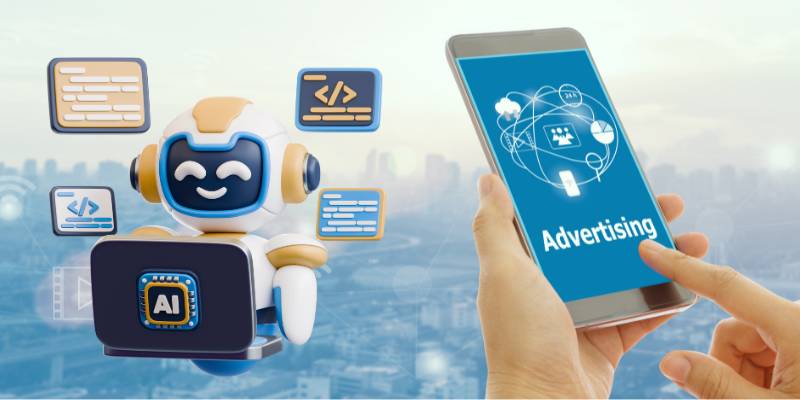Advertising has always been about capturing attention. From catchy jingles on the radio to splashy Super Bowl commercials, marketers have long battled for those fleeting moments of connection.
But now, with artificial intelligence reshaping almost every industry, a new contender has entered the ring: AI video ads.
And here’s where it gets complicated. On the one hand, I find the idea thrilling—imagine small businesses generating slick, professional-looking ads in minutes, without the overhead of a full production crew.
On the other hand, I feel this nagging concern. What happens when every ad looks polished but soulless? Will consumers grow skeptical, or worse, indifferent?
This article is my attempt to unpack both sides. We’ll dive into the technology, the opportunities, the drawbacks, and yes, the emotional undercurrents that make us human.
Because at the heart of it, ads aren’t just about selling—they’re about persuading. And persuasion is deeply tied to trust.
Chapter 1: What Are AI Video Ads?
Let’s start with the basics.
AI video ads are marketing videos created using artificial intelligence. Instead of hiring a production team, brands can use platforms like Pictory, Synthesia, or Runway to generate video content from scripts or prompts.
These systems pull together visuals, music, and even AI-generated presenters to craft a complete ad.
The difference compared to traditional production is speed and cost. What once took weeks and thousands of dollars can now be done in hours—or less.
It almost sounds too good to be true. And in many ways, it is both a dream and a dilemma.
Chapter 2: Why Brands Are Turning to AI
Let’s be honest: marketing is expensive. Even a simple video ad can involve:
- Scriptwriting
- Casting talent
- Shooting on location
- Editing and post-production
AI compresses all of that into software-driven efficiency. Businesses, especially small ones, are latching onto this.
According to a 2023 Wyzowl survey, 91% of businesses use video as a marketing tool, and the demand for affordable, scalable solutions is skyrocketing.
Here’s what AI offers:
- Affordability: Subscription-based tools instead of production crews.
- Scalability: Multiple ad versions tailored for different platforms.
- Speed: From idea to finished product in under a day.
- Localization: Ads translated into dozens of languages with AI lip-sync.
From a purely pragmatic view, it’s revolutionary.
Chapter 3: Stock vs AI Clips
Here’s an interesting twist. For years, brands leaned on stock footage to keep costs down. But stock vs AI clips is becoming a real debate.
- Stock footage: Polished but often overused. Audiences can spot the cliché handshake or skyline shot a mile away.
- AI-generated clips: Customizable and unique—but sometimes uncanny.
If you’ve ever cringed at a stiff AI avatar delivering a sales pitch, you know what I mean. Yet when done right, AI can create visuals that feel tailored rather than generic.
The irony? In chasing authenticity, we may end up relying on artificiality.
Chapter 4: Ad Creation Tools
The growth of ad creation tools is staggering. Platforms now promise to democratize video production, putting professional-level marketing within reach of anyone.
Some popular examples:
- Synthesia: AI presenters delivering scripts in multiple languages.
- Pictory: Turns blog posts into video summaries.
- Runway: Advanced editing and generative video creation.
- Lumen5: Social-media-optimized AI video ads.
These tools are powerful, but they also flatten the creative process. When everyone uses the same templates, ads risk blending into one another.
I’ve played around with a few myself, and while I was impressed by the speed, I couldn’t shake the feeling that something was missing—an edge, a spark, maybe even a little imperfection that makes art feel alive.
Chapter 5: Learning With AI Videos
For marketers, learning with AI videos is part of the appeal. These tools often come with built-in analytics: heat maps showing where viewers drop off, A/B testing for different variations, and automatic optimization.
This creates a feedback loop: generate, test, refine, repeat.
From a practical standpoint, it’s brilliant. Instead of gut instinct, advertisers now have data-driven confidence. But from a creative standpoint, I worry—does this reduce ads to formulaic shells designed to hold attention, rather than meaningful stories designed to connect?
Chapter 6: The Emotional Core of Advertising
At its best, advertising tugs at our emotions. Think of Apple’s “1984” ad, or Dove’s “Real Beauty” campaign. These weren’t just videos—they were cultural moments.
And here’s my unease: can AI replicate that emotional nuance? It can mimic it, sure, by analyzing thousands of successful ads. But mimicry isn’t the same as empathy.
An algorithm doesn’t understand heartbreak, joy, or nostalgia. It recognizes patterns in how those emotions are represented. But can it surprise us? Can it take risks that flop—or that resonate in ways no data could predict?
That’s what keeps me skeptical.
Chapter 7: Risks of Over-Automation
Like any powerful tool, AI video ads carry risks.
- Homogenization: Too many brands relying on the same AI systems leads to sameness.
- Uncanny Valley: AI presenters that feel “off” may alienate rather than engage.
- Loss of jobs: Videographers, editors, and actors could be sidelined.
- Ethical gray areas: Misuse of likenesses or misleadingly realistic content.
It’s not just about efficiency. It’s about the culture we’re building.
Chapter 8: Brand Backlash
One of the most overlooked issues is brand backlash.
Audiences value authenticity, and when they discover a company is leaning too heavily on AI, the response can be negative. Remember when brands were criticized for using AI art in campaigns instead of hiring artists? The same dynamic could hit video.
Imagine a heartfelt campaign revealed to be generated entirely by machines. Would you feel inspired—or manipulated?
In a 2023 Ipsos survey, 62% of consumers said they distrust brands that use AI without transparency. That’s a warning sign marketers shouldn’t ignore.
Chapter 9: Case Studies—AI in Action
- Coca-Cola launched an AI-powered video campaign using generative art in 2023. It drew intrigue but also debate about originality.
- Small startups are producing professional-looking ads with budgets under $100 using AI. This is a massive shift in accessibility.
- Political campaigns have already dipped into AI-generated content, raising ethical alarms about misinformation.
Each case shows both promise and peril.
Chapter 10: Where AI Shines
Let’s not be all doom and gloom. AI video ads shine in specific contexts:
- Explainers: Simple animations breaking down products.
- Localization: Translating content seamlessly.
- Short-form ads: Quick, data-driven social spots.
- Testing: Rapid iterations to see what sticks.
In these areas, efficiency trumps artistry. AI doesn’t need to replace creative directors—it just needs to help them work smarter.
Chapter 11: Where AI Fails
But in other contexts, AI struggles:
- High-concept branding: Campaigns built on cultural storytelling.
- Emotional resonance: Ads meant to move people deeply.
- Nuanced humor: Timing and cultural references that defy formula.
This is where human creativity remains irreplaceable.
Chapter 12: My Personal Take
I’m not anti-AI. Far from it. I think ad creation tools are an incredible resource, especially for small businesses who’d otherwise be locked out of video marketing.
But for the ads that define culture, that make us cry or laugh or see the world differently? Those need humans.
There’s something about the imperfections—the unscripted laugh, the shaky camera in a heartfelt testimonial—that builds trust. AI might smooth everything out, but sometimes it’s the rough edges that make us lean in.
Chapter 13: Future Outlook
So, where are we heading?
- Short-term (next 5 years): Widespread adoption of AI video ads for routine marketing.
- Medium-term (5–10 years): Rising tension between cost savings and demands for authenticity. Expect more brand backlash.
- Long-term (10+ years): A split market—AI handling mass, functional ads while human creatives focus on premium, emotionally resonant campaigns.
That feels like a workable balance.
Conclusion
AI video ads are both exciting and unsettling. They democratize advertising, making sleek content accessible to all. They optimize campaigns with data, help brands scale, and reduce costs.
But they also risk eroding authenticity, triggering brand backlash, and sidelining creative professionals. The debate over stock vs AI clips, the rise of ad creation tools, and the promise of learning with AI videos all point to a future where efficiency battles artistry.
And my personal stance? Use AI for what it does best—efficiency, testing, scalability. But don’t lose sight of the human heartbeat in advertising. Because in the end, ads aren’t just about views or clicks. They’re about trust. And trust is something no algorithm can fully generate.


